You want the peace of mind that your trees are going to live to a ripe, old age, giving you many more years of enjoyment. After all, your trees are a vital part of your landscape. Not only do they add aesthetic appeal to your property, but they also provide functional value by offering shade or a peaceful place to hang out in the yard.
That’s why concerns over tree diseases might have you worried. Whether you already suspect your tree might have a disease because its leaves are turning colors or falling off, or you’re just being proactive about protecting it from a future problem, you don’t want to feel as though you have to become a tree expert just to keep your tree safe.
We agree, which is why we’ve rounded up some information on common tree diseases for you. This helpful guide to tree disease identification should help give you a better idea of what you might be dealing with on your property.
1. Apple Scab Tree Disease
Apple scab is a fungus that attacks both wild and cultivated apple and crabapple trees. The first sign of an apple scab infection typically occurs on the leaves surrounding the flower buds. As it grows, the lesions become more pronounced, appearing as dull olive-green, yellow, or brown spots.

When severe, leaves may become dwarfed or twisted and begin to fall off. The tree’s fruit may also become infected at any time of the disease’s development, also causing lesions and ultimately premature drop.
2. Cedar Apple Rust
Like apple scab, cedar apple rust is a fungal disease which may occur on apple and crabapple trees, though it can also spread to various junipers and red cedars. This disease causes pale yellow spots to form on leaves, which ultimately turn orange.
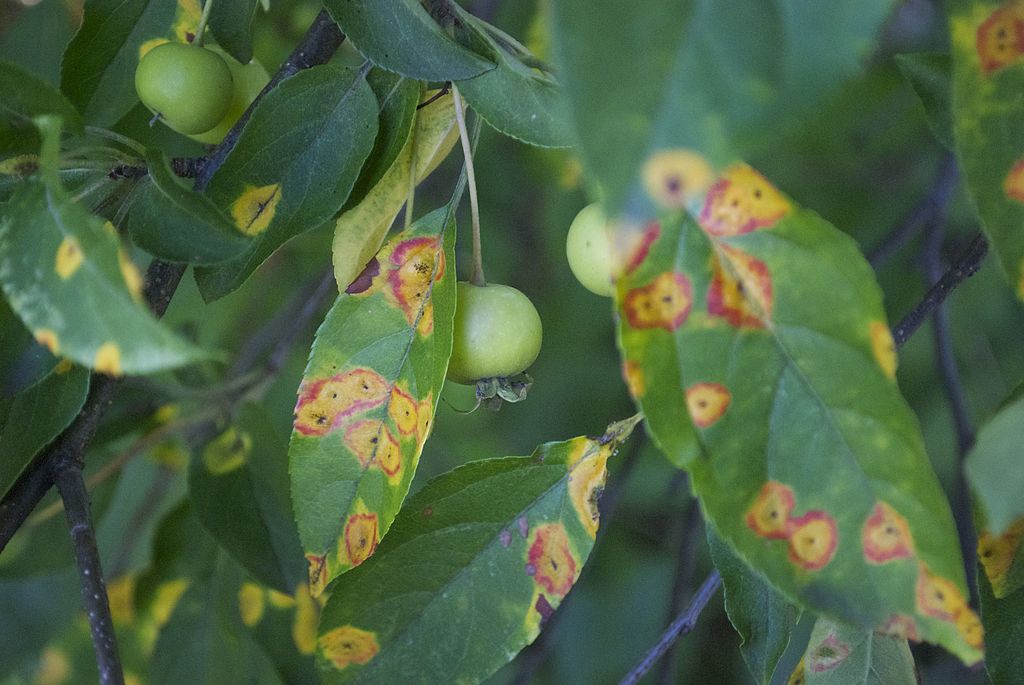
Orange spots may develop on the tree’s fruit as well. Small black fungal bodies may also become evident within the spots. This disease can lead to premature leaf and fruit drop.
3. Anthracnose Disease
This group of related fungal leaf and stem diseases has been known to infect deciduous trees including Dogwood, Maple, Oak, Sycamore, Ash, and others. Symptoms of Anthracnose include small dead spots on leaves, browning areas along leaf veins, premature defoliation, twig death, and dying buds in the early season, which can be misidentified as frost damage.
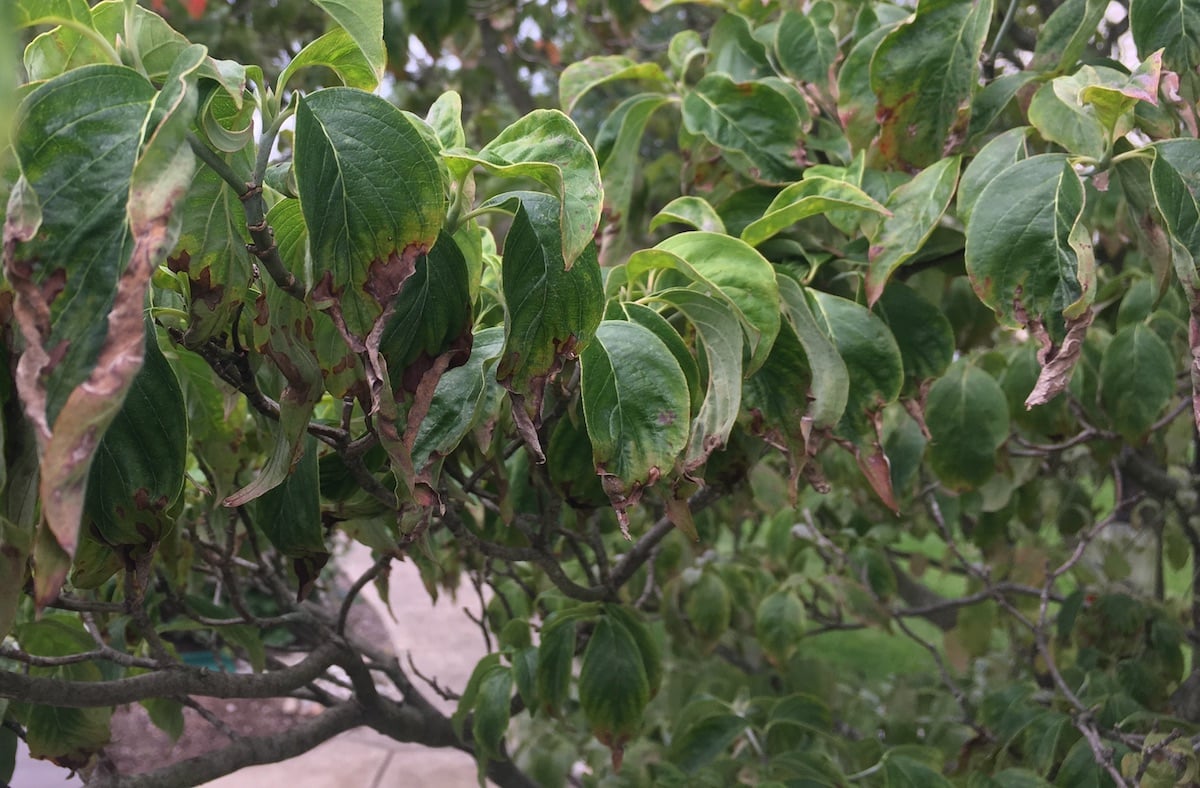
Oftentimes the lower and inner leaves and branches of the tree’s canopy show the most severe symptoms of this disease.
4. Verticillium Wilt
This fungal disease is common in deciduous trees. It is characterized in its early stages by heavy seed production, leaves that are smaller than normal, and browning of the margins of leaves.
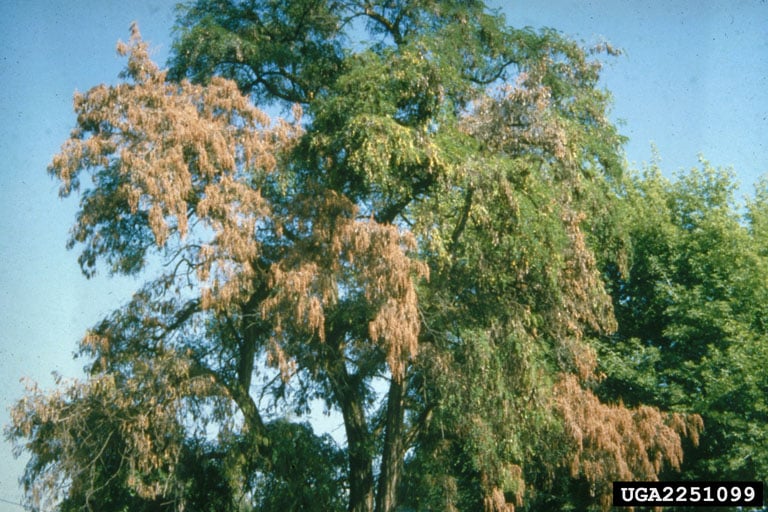
Oftentimes, the foliage on only one side of the tree will wilt. Typically, the wood under the bark of wilting branches will appear discolored in streaks, a telltale sign of verticillium wilt.
5. Powdery Mildew
Powdery mildew gets its name as a result of the powdery white substance that appears on an infected tree’s leaf surface. It is the result of millions of tiny fungal spores and will cause a decline in the tree’s vigor, leading to leaf yellowing and browning, distortion, and premature drop.
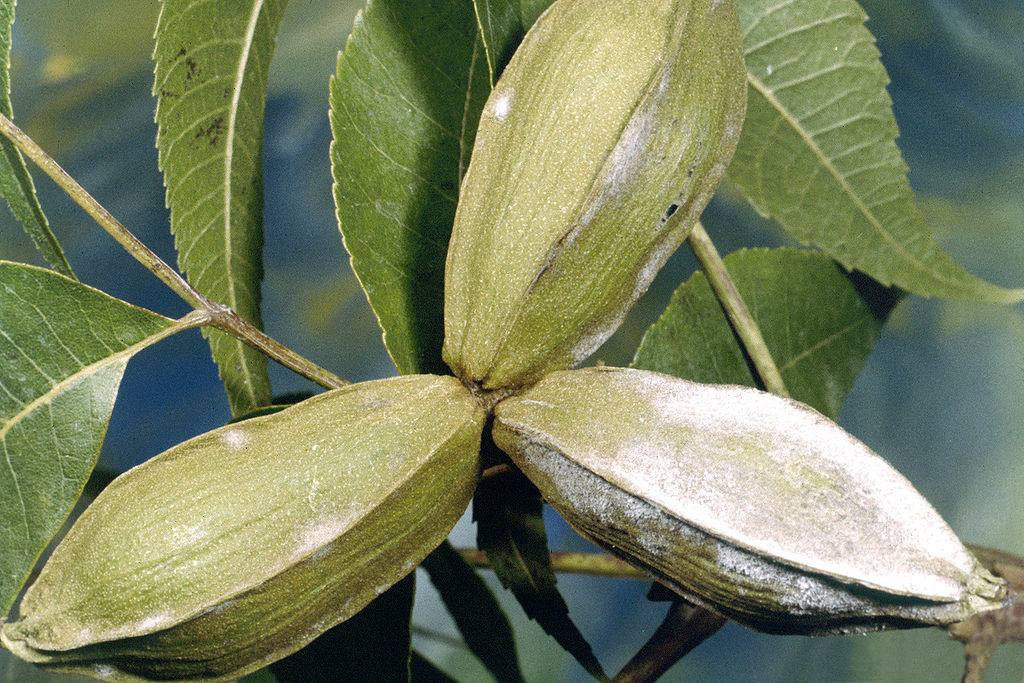
Young trees in heavy shade are most seriously impacted by this disease which can attack many different types of plants.
6. Fire Blight
Known to attack 75 different species of plants of the rose family, fire blight can also occur commonly on flowering pear trees. In fruit trees, the disease can kill blossoms, fruit, shoots, limbs, and even tree trunks.
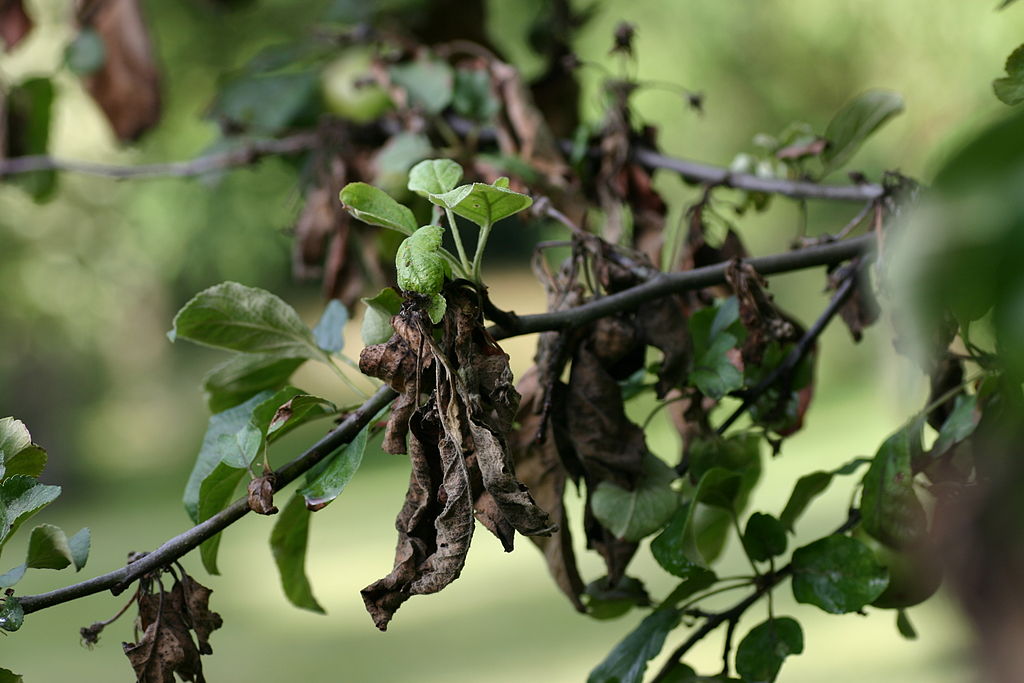
Infected blossoms wilt rapidly and turn dark brown. Leaves will also wilt and turn brown, though they typically remain attached to the tree. Fire blight also causes cankers on the tree’s limbs.
7. Thousands Cankers Disease
Thousands Cankers Disease is caused by fungus-carrying Walnut Twig Beetles, which tunnel beneath the bark of walnut trees and create small cankers. Over time, repeated attacks and growing cankers can lead to the disruption of water and nutrients through the tree.
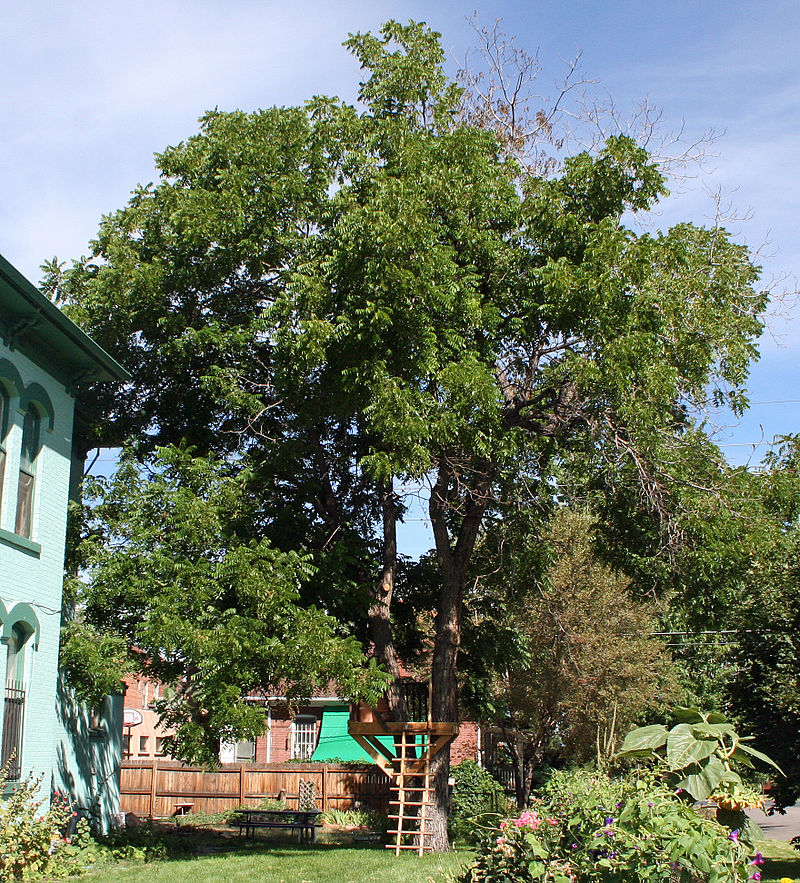
In time, this can lead to dieback of branches and kill the tree. There is no known cure for this disease.
Tree Disease Treatment and Control
In terms of how to handle these common tree diseases (as well as other diseases not mentioned above), the exact recommendations will vary depending on the specifics of the disease. This makes it important to work with a tree care expert who will perform the proper tree disease identification and ensure that the best treatment is executed.

The most obvious treatment for disease, such as a fungus infection, is the professional application of product. For tree fungus control, we utilize two different professional fungicide products including a contact control (which will reduce fungal spores right away) as well as an additional product which gets absorbed over a longer period of time.
In addition to treating the tree with a professional product, we may also make important cultural recommendations that will impact your tree’s health. These could include recommendations surrounding irrigation, pruning, or even mulching around the tree. Your actions could either be helping or hurting your tree’s health.
While there are often many steps that can be taken for tree disease control, the truth is, sometimes a tree disease can lead to death. As we’d mentioned, thousand cankers disease has no cure. If we come to see your tree after this disease has already taken an aggressive hold, it may be too late, leaving tree removal as your best option.
Plant Health Care Protection
Looking to the future, you might be interested in protecting the ongoing health of your trees and shrubs with a plant health care program. This adds a layer of protection to help your trees and shrubs defend against disease.
At Joshua Tree, we offer 3 options for tree and shrub care treatment packages to help improve your tree’s health: a 4-step program, a 6-step program, and an 8-step program.
In order to determine which option is best for your landscape, we’ll consider the species of the trees and shrubs on your property, the degree of potential damage or problems already present, and your expectations for protecting your trees and shrubs and improving their health.
Working with a Certified Arborist
While one of these 7 tree diseases might be the source of your tree problem, the truth is, there are many possible problems that your tree could develop. Pest problems and even environmental stressors can have similar symptoms of disease, making it difficult to perform proper tree disease identification on your own. That’s why it’s so important to work with a professional. They can get to the bottom of what’s really going on.
By having a Certified Arborist visit your property regularly as part of a plant health care program, not only can you feel confident that a problem will be spotted early on, but you’ll also gain the peace of mind that an expert will know exactly what you’re dealing with. This means your trees can thrive for many years to come.
Concerned about how you can keep the trees on your property looking beautiful and healthy? Get in touch with us to get some free expert advice and a quote for plant health care. It’s our hope that you can soon leave your tree and shrub worries behind!
Image Sources: apple scab, cedar apple rust, verticillium wilt, powdery mildew, fire blight, thousand cankers disease,




